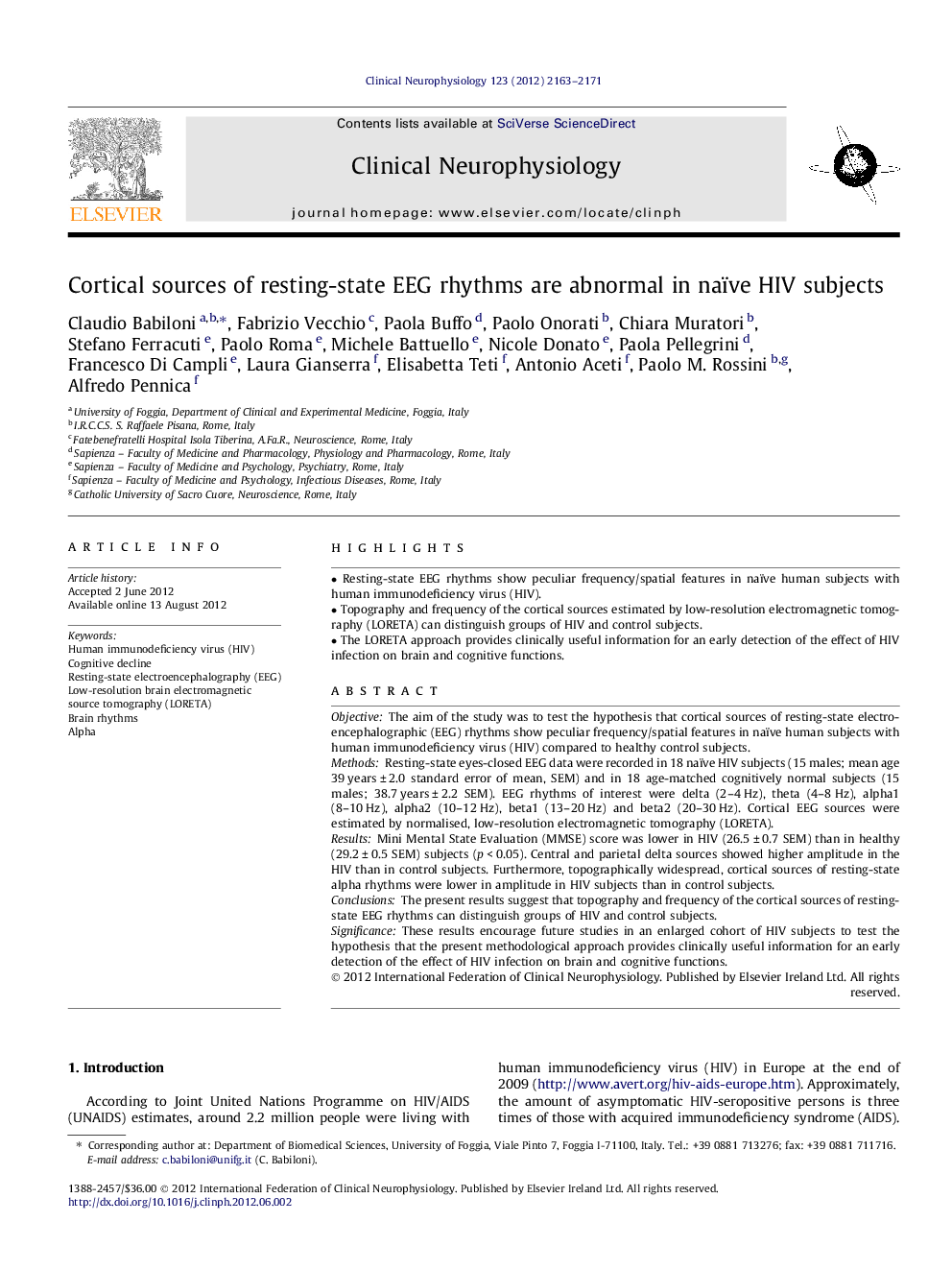| Article ID | Journal | Published Year | Pages | File Type |
|---|---|---|---|---|
| 3043105 | Clinical Neurophysiology | 2012 | 9 Pages |
ObjectiveThe aim of the study was to test the hypothesis that cortical sources of resting-state electroencephalographic (EEG) rhythms show peculiar frequency/spatial features in naïve human subjects with human immunodeficiency virus (HIV) compared to healthy control subjects.MethodsResting-state eyes-closed EEG data were recorded in 18 naïve HIV subjects (15 males; mean age 39 years ± 2.0 standard error of mean, SEM) and in 18 age-matched cognitively normal subjects (15 males; 38.7 years ± 2.2 SEM). EEG rhythms of interest were delta (2–4 Hz), theta (4–8 Hz), alpha1 (8–10 Hz), alpha2 (10–12 Hz), beta1 (13–20 Hz) and beta2 (20–30 Hz). Cortical EEG sources were estimated by normalised, low-resolution electromagnetic tomography (LORETA).ResultsMini Mental State Evaluation (MMSE) score was lower in HIV (26.5 ± 0.7 SEM) than in healthy (29.2 ± 0.5 SEM) subjects (p < 0.05). Central and parietal delta sources showed higher amplitude in the HIV than in control subjects. Furthermore, topographically widespread, cortical sources of resting-state alpha rhythms were lower in amplitude in HIV subjects than in control subjects.ConclusionsThe present results suggest that topography and frequency of the cortical sources of resting-state EEG rhythms can distinguish groups of HIV and control subjects.SignificanceThese results encourage future studies in an enlarged cohort of HIV subjects to test the hypothesis that the present methodological approach provides clinically useful information for an early detection of the effect of HIV infection on brain and cognitive functions.
► Resting-state EEG rhythms show peculiar frequency/spatial features in naïve human subjects with human immunodeficiency virus (HIV). ► Topography and frequency of the cortical sources estimated by low-resolution electromagnetic tomography (LORETA) can distinguish groups of HIV and control subjects. ► The LORETA approach provides clinically useful information for an early detection of the effect of HIV infection on brain and cognitive functions.
